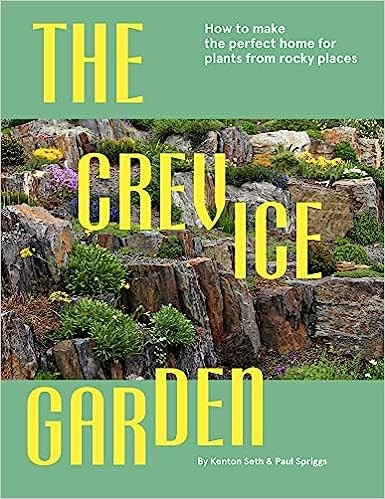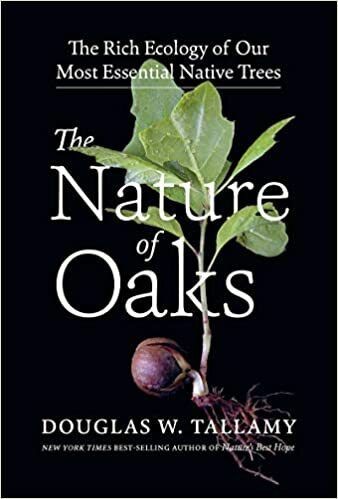The Crevice Garden:
How to make the perfect home for plants from rocky places
By Kenton Seth and Paul Spriggs

This gardening book is a great fit for Wild Ones Front Range Chapter–as well as
gardeners elsewhere in the state and even the world. The authors hail from Fruita,
Colorado and British Columbia; they have studied crevice gardening with Zdenek
Zvolanek of Czechia and other master crevice gardeners.* Between them they have 35
years of experience building and teaching about crevice gardens. This book is the
blossoming of their work and reveals their passion for this field.
What is crevice gardening?
In the Foreward, Zvolanek writes: “A crevice is nature’s first step in slowly changing the
naked surface of our rocky planet into a piece of paradise. It is decorated with saxatile
(rock-loving) flowers….
The authors add: “the modern crevice garden is a style of rock gardening that employs
the crevices between rocks to mimic the conditions that many difficult-to-grow plants
need. These gardens…give the impression of a natural rocky outcrop. This sense of
solidity requires that a a classic crevice garden is constructed with buried rocks over at
least half of its surface….which offers diverse microclimates…it grows plants better than
other rock gardens mainly because of the way in which it channels and conserves
water….In a crevice garden’s lean soil we can cultivate the plants that are native to the
very edge of where life can exist.”
How Do You Do It?
The stunning photos in this book show the “jewel box” effect of smaller crevice gardens
and the brightly colored buns, mounds, and cushions luxuriously draped over angular
boulders in larger gardens. Designs can imitate nature, with sheer cliffs and valleys or
can take shape according to the artistic whimsy and personal goals of the gardener.
The chapters feature practices and examples from different parts of the world, several
of which feature gardens on Colorado’s Front Range including, of course, the Denver
Botanic Gardens, a leader in rock and crevice gardening internationally. The “roots [of
this field] are deep in the history of rock gardening and perpetual efforts to find a better
way to grow alpine plants.” [p.39]
Specifically, the authors discuss where these plants grow–arctic and alpine
environments, steppes, deserts, “urban ruins”– and more. In Colorado, crevice gardens
grow plants from all these environments. Some gardeners choose to plant rare species
for conservation. “Urban ruin” gardens feature re-purposed concrete, crumbling stone
walls and such.
Spriggs and Seth show us how crevices are so good at growing plants, how to plan,
build, and maintain a crevice garden of our choice, what types of simple soil mixes to
choose from to please plants that don’t like rich organic soil, but treasure mineral soil.
Their Plant Profiles section describes crevice-gardening genuses from around the world,
but do not mention species, leaving it up to us to fill in these blanks locally as we wish.
So how do native plant gardeners learn about and access seeds or transplants for
native Colorado crevice garden plants?
The places to start:
For plant ID–
Colorado Native Plant Society (CoNPS) Alpine Plants and Habitats –
check the CoNPS bookstore for Colorado alpine plants
Jennifer Ackerfield website: She is the author of Flora of Colorado (book); if you
have the name of a plant and want to check out if it’s native to Colorado, look it up here.
If it grows here, but is not native, the entry will say “introduced.” (Ackerfield is currently
conducting a citizen science initiative for the collection of alpine thistles throughout
Colorado. Click on “Team Thistle” at the website to learn more.)
For seed sources– Rocky Mountain Chapter of the North American Rock Garden
Society
The Crevice Garden, although coffee-table-book quality, is hardy enough to take
outside and consult as we plant crevice rocks with their whole different genre of native
plant habitat. With this method we can extend our notions of xeriscaping (or
Coloradoscaping) to include fireworks of diverse characteristics, color and beauty.
*Kenton Seth is also an advisor of sorts to Wild Ones Front Range Chapter, and is the
designer of the Front Range Garden Design, which is also included on Wild Ones’ national
website.
The Nature of Oaks
by Doug Tallamy PhD
Review by Pam Sherman

Make yourself a cup of tea, pull up a comfy chair; reading this book is like having tea with the master, the lifetime honorary director of Wild Ones, as he spins true tales of lives lived on, in, around, and thanks to the most majestic and powerful trees In North America: oaks.
The lives are mostly those of his favorite animal, caterpillars (the larval stage of moths and butterflies), the basis of crucial food chains and ridiculously interesting in their own right.
Tallamy’s passion is infectious, even for readers (like me) who live in ecosystems without native oaks (Colorado Front Range montane). His storytelling and discussions are making me curious; I’m looking more closely and with more wonder at the keystone trees and caterpillars we do have.
His key message, however, is vital: plant oaks–as young as possible (the tree, that is).
He explains why. He also convincingly counters Frequently Asked Objections readers raise about planting oaks. He explains that doing so provides, by his estimation, the biggest bang for the buck in terms of restoring our deeply damaged or destroyed native ecosystems. Oaks are native almost everywhere. And Tallamy has a chapter on how to plant them.
We have four species in some counties in Colorado: Quercus gambelii (Gambel oak) and Q. grisea (gray oak), both intermediate-sized trees per Tallamy. Some counties also have Quercus turbinella (shrub live oak/Sonoran scrub oak). Tallamy also lists Quercus welshii (shinnery oak) as native to western CO, but the authoritative reference, Flora of Colorado, does not mention it at all.The Flora also says that where the ranges overlap, the oaks hybridize easily.
Tallamy wrote this book in hopes of galvanizing “every single earth dweller” to plant an oak–and preferably several oaks together in community, whose roots can intertwine and support each other…a small grove, a potent restored ecosystem. In his words: “It is the loss of the common kingpins like oaks that we must prevent as if our well-being depends on them. For it does.”
